Jennifer Johnson
President & CEO
Nitsch Engineering
Boston, MA
July 15, 2025
It’s hard to believe we’re already in July as 2025 seems to be flying by. In a year defined by new fiscal positions and priorities, global tariff stops and starts, and technological advancements and disruptions, the resilient A/E industry continues its upward climb. Every summer we take the pulse of several prominent industry leaders across the country and disciplines. We were curious to learn how their organizations are faring, where they see growth opportunities, ownership model dynamics, leadership styles, the drivers of a strong culture, and summer vacation plans and reading lists.
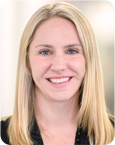
Jennifer Johnson
President & CEO
Nitsch Engineering
Boston, MA
Tell us about Nitsch Engineering and your capabilities and markets.
Nitsch Engineering specializes in providing civil engineering, land surveying, transportation engineering, structural engineering, planning, green infrastructure and resilience consulting, and GIS services. Since our founding in 1989, we have worked on a wide variety of infrastructure and site development projects throughout New England and the Mid-Atlantic. On each, our focus is on collaborating with our clients to deliver creative, cost-effective, and resilient project solutions—and as a result, 97% of our work comes from repeat clients!
How does the second half of the year look and heading into 2026? Any specific growth opportunities (services, markets, geographic, etc.) for the organization?
As we move into the second half of 2025 and look ahead to 2026, we are well-positioned for continued growth, buoyed by a strong pipeline of booked work secured in the second quarter. We are placing particular emphasis on expanding our presence in the Mid-Atlantic, with our new office in Richmond serving as a key driver for regional opportunities. At the same time, we are actively exploring additional avenues for regional growth in New England, especially within the public sector—such as infrastructure, transportation, and bridge projects. With the uncertainty that marked the first six months of 2025, we continue to focus on diversification of our work across public and private sectors, and are working to ensure that our strategic focus remains adaptive and responsive to evolving market needs.
Nitsch opened a new office in Richmond this spring. What was behind the move and what opportunities do you see in the Mid-Atlantic?
Richmond is a robust market that has experienced considerable transformation over the past decade. Following the establishment of our Washington, DC office in 2017, last year we evaluated adjacent markets and identified significant opportunities in Richmond that aligned with the strengths of our team. We were fortunate to bring a leader to Nitsch with extensive experience and established relationships to support the development of our presence there. We are encouraged by this year’s progress to date and remain confident in the market’s growth prospects, particularly in the academic market, for the upcoming year.
The firm continues to add new shareholders, with over 35 today. How has your broad employee ownership model helped with growth and engagement?
Nitsch is proud to be 100% employee owned! We have an amazing team of talented professionals who have built this company, and we strongly believe that having a diverse group of owners—across all disciplines and geographies—helps to drive our success. As a result of our values-driven culture and strong financial foundation, we are thrilled to have continued interest from motivated employees who want to become shareholders. Our broad ownership structure supports our ability to recruit and retain engaged professionals who share our vision for growth and are empowered to do the work to achieve that vision.
You assumed the President and CEO role earlier this year. How has that transition been? What have been some of your early initiatives or priorities to clients and staff?
I assumed the role of President and CEO in January, succeeding Lisa Brothers—who had served in this role since 2011—and am honored to be the third-generation leader following both Judy Nitsch and Lisa. As part of our CEO transition, I led the creation of our 2025–2028 Strategic Plan, which set a strong direction for 2025. At the heart of our strategy is “Engineering for People”—ensuring every decision considers its impact on those we serve. We are committed to empowering our team, amplifying client and community voices, and staying proactive as infrastructure needs evolve. This led me to four priorities for 2025:
What are your plans this summer for rest and relaxation?
I love the summer season and make it a priority to spend as much time outdoors as I can. Whether it’s grilling at home, running, going to the beach or to a concert, or attending my sons’ baseball games, I just love to be outside while it’s warm here. I also meet up with my family who are based in the Mid-Atlantic for some downtime at the lake, which allows me to unwind and recharge before we head into the fall.
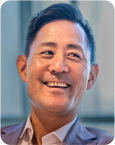
Kyu Jung
Co-Founder and President
Procon Consulting
McLean, VA
Tell us about Procon Consulting and your capabilities and markets.
Procon Consulting is a premier construction management and technology consulting firm headquartered in the Washington, D.C. metropolitan area. For over 25 years, we’ve managed and delivered complex capital projects and programs for government and private-sector clients nationwide. Our capabilities span construction and program management, project controls, commissioning, digital twins, and building information modeling (BIM).
We’ve been recognized as an ENR Top 100 CM/PM firm for five consecutive years, managing construction projects in nearly every U.S. state and several countries around the world. We regularly collaborate with other AEC firms and leading project management software companies to deliver efficient, impactful projects. Some of our current local highlights include the new Lincoln Memorial Museum beneath the iconic steps, renovation and modernization projects for the Architect of the Capitol, and the Tidal Basin Seawall Rehabilitation. These projects reflect our continued commitment to preserving history while shaping the future.
How does the second half of the year look, and heading into 2026? Any specific growth opportunities (client, geographic, etc.) for the organization?
The second half of the year looks strong. We’re entering it with a healthy backlog and a number of exciting new pursuits. Our focus is on deepening our presence in strategic regions—particularly the Southeast, Mid-Atlantic, and Southwest—and expanding our capabilities in transportation, energy, and technology-forward sectors.
Looking ahead to 2026, we’re intentionally scaling into a well-positioned, mid-sized firm—one that combines personalized service with the horsepower to support large-scale, complex programs. That means investing in innovation, forging strategic partnerships, and growing responsibly to meet evolving client demands while staying true to our values. Geographically, our work continues to stretch coast-to-coast—from Madawaska, Maine to Skagway, Alaska. But we’re also going global, with current projects in Central Asia and a recently awarded contract in Nepal. As our portfolio expands, so does our need to attract top-tier CM talent, particularly in the Midwest, Southwest, and Florida.
Procon has a strong track record and reputation in the federal sector, working across various agencies at project sites nationwide. Given the administration changes to start the year with federal budgets and workforce reductions, how is Procon adapting?
We’ve weathered multiple administration changes over the past 25 years, and each one has reinforced the importance of staying grounded in our core values: serve our customers, act with integrity, embrace excellence, and commit to our team. These principles continue to guide us through changing political and economic landscapes. While federal budget constraints and workforce reductions earlier this year posed challenges, we’ve remained agile, proceeding thoughtfully, avoiding unnecessary risk, and staying open to new opportunities.
We’re also actively investing in our people and in the technologies that empower them—not just to do more with less, but to deliver even greater value to our clients. In moments like these, creativity and discipline are both essential. We’re using this season to sharpen our tools, explore new ideas, and pursue growth opportunities that align with our long-term vision.
You and your partner Mark Ilich founded Procon 25 years ago. What advice would you offer entrepreneurs starting A/E/C firms today?
When Mark and I started Procon from a Virginia Tech dormitory at the tail end of graduate school, we never imagined we could grow the company to where it is today. We could not have done it without the guidance and mentorship we received from several influential professors at VT and the generosity of industry leaders who were willing to share their time and wisdom. Early on, I made a point to ask more experienced professionals to meet for coffee or lunch—just to listen and learn. I was genuinely surprised by how open and supportive they were. Many of those informal conversations turned into lasting relationships and key partnerships.
For young entrepreneurs starting out, my advice is simple- seek out mentors and don’t be afraid to ask questions. You don’t have to do it alone. The AEC community is built on collaboration, and investing in relationships—whether for advice, partnerships, or simply perspective—can be one of the smartest things you do for your business.
Last year you both started the Procon Innovation Center, a dedicated lab for construction students at your alma mater Virginia Tech. Tell us more about that.
Virginia Tech is a very special place to me and Mark, it’s where we were inspired to start our own business and disrupt the AEC industry. It was important to us to pay it forward for the next generation of AEC leaders by investing in an innovation and research space on campus.
The Procon Innovation Center, located inside the newly opened Hitt Hall, is a hands-on learning space outfitted with cutting-edge technology. Our goal was to help today’s students engage with the latest tools shaping the future of construction—from robotics to 3D printing—and to bridge the gap between academic learning and real-world application. It’s already been rewarding to see students from the Myers-Lawson School of Construction using the 3D concrete printer to address real challenges like the affordable housing shortage in the Blacksburg area. Watching them apply technology to real-world problems has been incredibly inspiring and reaffirms our belief in the power of investing in education and innovation.
What are your plans this summer for rest and relaxation?
I’m heading to Spain for the first time, and looking forward to exploring the streets of Barcelona, the coastline of Costa Brava, and immersing myself in the culture, food, and architecture. It’s a chance to recharge, gain fresh perspective, and soak in some inspiration along the way.
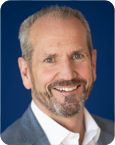
Dan Larson
CEO
American Engineering Testing, Inc.
St. Paul, MN
Tell us about American Engineering Testing (AET) and your capabilities and markets.
AET lives and breathes our mission of Working Together to Build a More Certain World. We are a multidiscipline engineering firm, founded in 1989 with corporate roots dating back to 1971. We serve the transportation, commercial, energy, industrial, and government markets. Our practice areas include civil, geotechnical, environmental and building science engineering supported by nationally recognized petrography, chemistry, concrete, and asphalt materials laboratories. We have 18 offices spread across the Midwest and west and annually work on projects in all 50 states as well as a number of foreign countries.
How does the second half of the year look and heading into 2026? Any specific growth opportunities (markets, geographic, etc.) for the organization?
The second half of 2025 looks strong from a backlog standpoint. In particular, the transportation, renewable energy and city/county markets are active, with significant project volume. We have seen continued weakness in the overall commercial market, although there are hints of a rebound in 2026. Economic uncertainty has dampened enthusiasm for next year a bit, but if the tariff environment improves and we avoid a recession (or it is shallow), we expect solid growth in 2026.
You have been with AET for many years in a variety of positions before assuming the CEO role. What advice would you offer a new generation of leaders stepping into similar positions in terms of style or approach?
I like to call myself a recovering Baby Boomer, meaning I have adapted my leadership style to today’s generations. Successful firms won’t beat the drum on hours and utilization, they will have a relentless focus on mission and vision, organizational agility and flexibility, and skills-based approach to talent development. Our new and future leaders are facing rapidly changing times and dizzying technological advances. They will need to be motivators, team builders and conveners that embrace technology to create an environment where their teams effectively deliver value-based, not hours-based, solutions. I would advise them to be highly curious and adaptable, not afraid to fail and constantly learning.
AET is 100% employee owned. Share how your ESOP model has been to your culture and in retaining and recruiting professionals?
AET has been a 100% ESOP company since 2011, fulfilling the dream of our founders. We have always had a family atmosphere infused with an entrepreneurial spirit. In the late-2010’s, we were kind of on autopilot and not talking about what being an ESOP really meant to our success. Over the past 6 or 7 years, we have re-engaged our people on the power of an ESOP by promoting a culture of ‘We are People First’, ‘We Succeed Together’, and ‘We Bring our Best’, three of our five Principles.
This has reignited pride in our ESOP, knowing we all play a collective part in our career and financial success. This has been a distinct advantage when recruiting and retaining early and mid-career professionals. In fact, we’ve had many people join AET specifically because of our ESOP and return to AET because they missed the culture it creates.
This year you were elected 2025-2026 Chair-Elect of ACEC National and will be assuming the Chair position in 2026-2027. What are some of the goals you have for the industry overall as well as advancing the profession?
ACEC must help our member companies prepare their firms for the future by having a discussion around the role of AI and technology, workforce challenges and regulation. If we are convenors in the discussion on AI, we will be able to influence its impact on our industry in a positive way. In a similar fashion, many of our workforce challenges can be addressed with a thoughtful approach to creating more effective companies by leveraging technology and developing strong leaders. And finally, we have to continue to advocate for the work of our industry, whether it be increased funding, advancing smart regulatory policies or promoting the essentiality of what we do. We do not give ourselves enough credit for the good we do every day.
What’s on your summer reading list?
I have been reading a lot about generative and agentic AI. It’s fascinating to me how quickly AI has gone from an ‘IT project’ to being woven into the fabric of our companies. AET is having very substantive conversations with our leadership team about the short- and long-term opportunities AI presents and the power it has to help us differentiate.
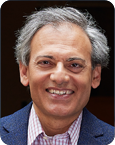
Hemanshu Parwani (HP)
CEO
Olson Kundig
Seattle, WA
Tell us about Olson Kundig and your capabilities and markets.
Olson Kundig is a design practice with over 375 team members, including architects, interior designers, landscape architects, and master planners. With offices in Seattle, Chicago, and New York City, we operate globally, with active projects on six continents. The firm’s diverse portfolio spans residential, multifamily, mixed-use developments, hospitality, commercial, sports, and cultural sectors. Our collaborative approach and geographic reach allow us to deliver context-driven design solutions across a wide range of environments, communities, and client needs.
How does the second half of the year look and heading into 2026? Any specific growth opportunities (market sector, geographic, international, etc.) for the organization?
Moving into the second half of the year and looking ahead to 2026, we remain cautiously optimistic while closely monitoring capital markets, economic trends, and global political developments. Certain market sectors that rely heavily on debt financing continue to show a level of softness due to high interest rates and a low-risk appetite. Despite this, we are excited by opportunities in multi-family housing, higher education housing, and sports-centered developments. We expect economic headwinds to continue into 2026, but our focus is on sectors with resilient demand and growth potential.
In 2022 Olson Kundig opened a studio in Manhattan and then last year one in Chicago. What was the rationale behind those new office pursuits?
Our decision to open studios in Manhattan and Chicago was both strategic and opportunistic, aligning with our broader goals for growth and talent development. Establishing a studio in New York City allowed us to deepen our presence in a market where we previously had a light footprint, enabling us to collaborate with clients and partners more closely in the region. Opening the Chicago studio was a deliberate move to tap into the Midwest’s great talent pool and expand our geographic reach.
The firm's design ethos is one centered around People, Culture and Nature. How would you describe Olson Kundig's organizational culture today? What attracts both designers and clients to the firm?
Olson Kundig’s culture is deeply rooted in its people—our values around collaboration, curiosity, and craft continue to define our firm’s identity and impact across the many geographies and project types we engage with. Designers are drawn to our interdisciplinary approach and emphasis on site-responsive work because it reflects a deep understanding of both the built and natural environments. Clients are drawn to our contextual designs because they reflect our deep understanding of placemaking and sustainability, which ultimately lead to enduring spaces.
You've built an executive career path working for a variety of A/E firms in different functional roles, such as strategy, finance and international operations, before coming to Olson Kundig. How have those prior experiences helped you in your role as CEO? What advice would you offer to young industry leaders today?
My previous experiences have greatly influenced the career path I’ve taken and led me to my role on the leadership team at Olson Kundig today. Each role helped me develop a broader perspective on how to navigate the complexities of an interconnected world, skills that are increasingly essential in the architecture and design industry. I believe every CEO in the A/E industry would benefit from intentionally seeking out diverse experiences in finance, strategy, operations, and international business to build the foundation needed to be an informed and agile leader.
One of the most valuable lessons I’ve learned is that there’s no substitute for building lasting, meaningful relationships, whether with clients, collaborators, or team members. My advice to emerging leaders is to stay flexible and open to change; the ability to pivot in response to challenges is just as important as having a clear vision.
What’s on your summer reading list?
I’ve been reading
Buddha and the BadAss by Vishen Lakhiani and
Atomic Habits by James Clear.
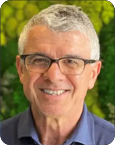
Jim Stamatis
CEO
True Environmental
New York, NY
Tell us about True Environmental and your capabilities and markets.
True Environmental is a dynamic and growing environmental and engineering firm delivering professional and technical services across a range of end markets, including water resources, energy, power, mining and minerals, transportation and federal programs.
Our core technical capabilities include surface and groundwater studies and engineering, marine and coastal engineering, brownfield assessment and remediation, and natural and cultural resource management. We also specialize in industrial hygiene, environmental health and safety, right-of-way compliance, and air quality services. What sets us apart is our multidisciplinary expertise and our ability to bring integrated, solution-oriented teams to our clients’ most complex environmental and engineering challenges.
How does the second half of the year look and heading into 2026? Any specific growth opportunities (market sector, geography, etc.) for the organization?
We’re seeing strong momentum heading into the second half of the year and expect that to continue into 2026. Demand across our geographic markets remains robust, with particularly strong performance in our energy and water resources sectors.
While the federal market faced some early-year uncertainty as agencies evaluated mission-critical priorities, we’re now seeing a clear rebound—reflected in increased demand for our services and expanding opportunities across multiple federal programs. This resurgence, combined with sustained growth in private-sector infrastructure and resilience work, positions us well for the year ahead.
True has scaled fairly dramatically by acquiring environmental and engineering firms nationwide to your platform. What are some of the characteristics you typically look for in good target firms and future partnerships?
At True, cultural alignment is always the starting point—and the most critical factor—in evaluating any potential partnership. We seek firms whose values, commitment to technical excellence, and client-first mentality are closely aligned with True’s mission and long-term vision. Beyond shared values, we prioritize firms led by strong, engaged leadership teams who are motivated to continue building and scaling alongside us. These leaders are integral to maintaining continuity, culture, and client relationships as we grow together.
Once cultural fit is confirmed, we focus on strategic complementarity. We’re particularly interested in firms that enhance our geographic reach, diversify our service offerings, or deepen our capabilities in existing markets. As True expands, we see compelling opportunities to create mutual value—empowering our partners with the resources and scale of the platform, expanding career pathways for their teams, and unlocking new services and solutions for clients. Ultimately, we look for partners who want to grow with us—who are excited by the opportunity to help shape the next phase of True’s evolution, while continuing to drive impact in their own communities.
Obviously, the industry is facing challenges in recruiting and retaining engineering and environmental positions at all levels. What are some of the tools and strategies True has used with bringing in new talent?
At True, our culture is our strongest differentiator. We’re building a purpose-driven organization focused on delivering meaningful work and offering real opportunities for personal and professional growth.
We invest heavily in employee development, mentorship, and leadership training. We also regularly measure employee engagement and satisfaction, using that feedback to continuously improve the employee experience. Our goal is to create a workplace where people feel supported, challenged, and excited about their future.
Your career path included positions at large design firms before leading True Environmental. How have those experiences helped shape you as a CEO at True today?
My career journey—from leading small, specialized teams to overseeing a global 6,000-person organization—has given me a broad perspective on what it takes to build and lead high-performing professional services firms.
I’ve seen firsthand the importance of staying connected to your people—listening, anticipating their needs, and empowering them to do great work. I’ve also learned valuable lessons from what doesn’t work, and I’m intentional about applying those insights to avoid repeating mistakes. Leading True is about combining that experience with a forward-looking mindset—fostering a culture of innovation, accountability, and trust.
What’s on your summer reading list?
I have several books and audiobooks to tackle including Superabundance by Marian Tupy and Gale Pooley, False Alarm by Bjorn Lomborg, The Next 100 Years by George Friedman, The Comfort Crisis by Michael Easter, and Muppets in Moscow by Natasha Lance Rogoff.
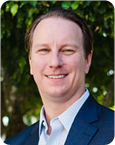
Steve Gido is one of the A/E industry’s leading M&A advisors. For over twenty years, he has served as trusted counsel to founders, owners, executives and boards of directors in pursuing both growth and exit strategy options. Over the course of his career, he has advised on a wide number of A/E transactions, representing both buyers and sellers of all sizes and disciplines.
Latest Perspective
Aligning Your Ownership Strategy with Your Strategic Plan
The relationship between ownership strategy and business strategy is deeply intertwined. When these two elements ...
Rusk O'Brien Gido + Partners, LLC